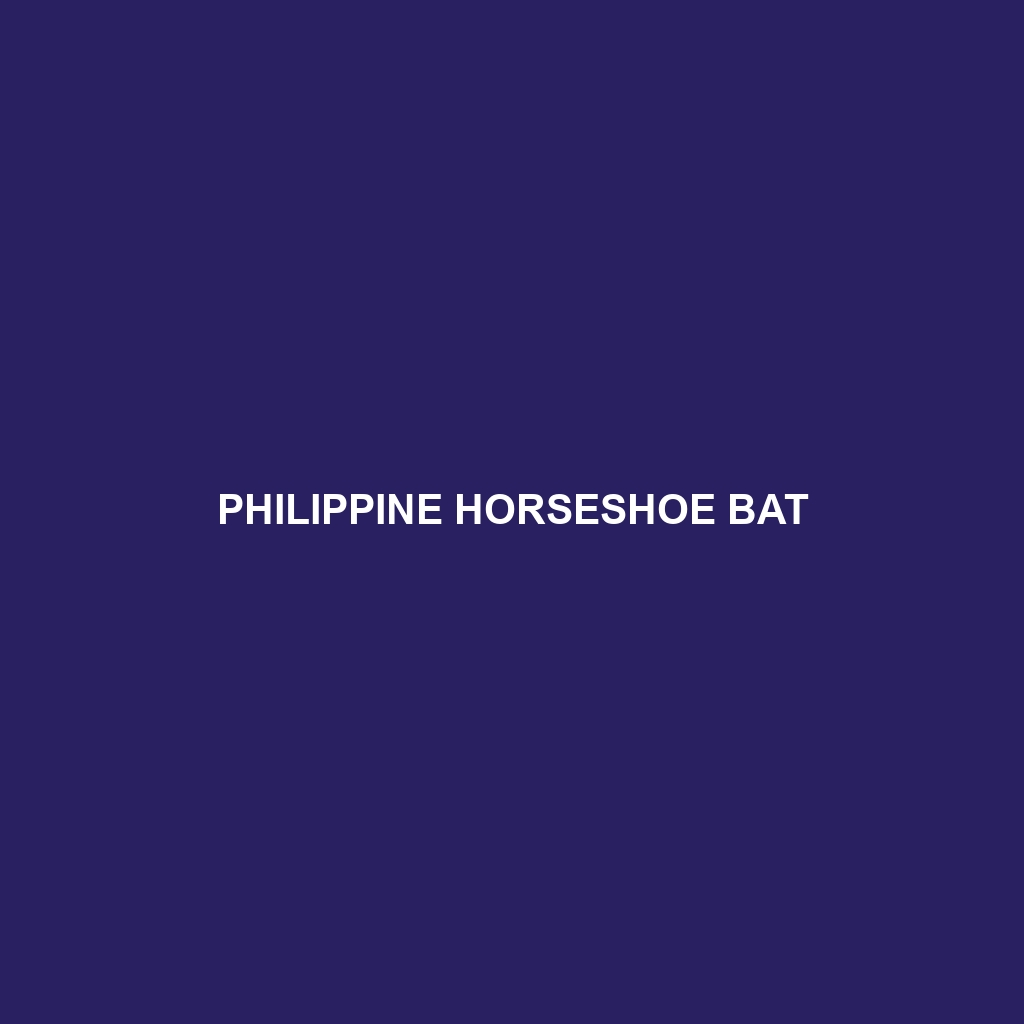Lesser Horseshoe Bat
Common Name: Lesser Horseshoe Bat
Scientific Name: Rhinolophus hipposideros
Habitat
The Lesser Horseshoe Bat is primarily found across Europe and parts of Asia, thriving in a variety of environments. This species typically inhabits woodland areas, grasslands, and agricultural landscapes, favoring sites that provide ample roosting opportunities such as caves, old buildings, and tree hollows. The presence of insects, its primary source of food, significantly influences its habitat choices, leading them to areas with high biodiversity.
Physical Characteristics
Lesser Horseshoe Bats are small bats, typically weighing between 5 to 10 grams and measuring about 4 to 6 centimeters in length. They have distinctive horseshoe-shaped nasal membranes, which are particularly pronounced in males. Their fur is soft and dense, usually exhibiting a grayish-brown color with lighter underparts. Notably, their wings are broad and long, facilitating agile flight, and their external ears are large and rounded, aiding in echolocation.
Behavior
This bat species is nocturnal, becoming active at dusk as they emerge from their roosts to forage for insects. They utilize a sophisticated echolocation system for navigation and hunting, often hunting near the ground where their prey, such as moths and beetles, is abundant. During colder months, Lesser Horseshoe Bats hibernate in protected areas to conserve energy.
Diet
The Lesser Horseshoe Bat primarily feeds on a variety of nocturnal insects, including moths, flies, and beetles. Its diet is crucial for pest control, making them vital for agricultural ecosystems. They typically hunt in low vegetation, using their echolocation skills to locate prey in complete darkness.
Reproduction
The breeding season for Lesser Horseshoe Bats usually occurs in late summer, with females giving birth to one or two pups in June or July. After a gestation period of about 6 to 7 weeks, the pups are born blind and rely heavily on their mothers for warmth and nourishment. By late summer, the young bats are capable of flight and begin to venture out with their mothers.
Conservation Status
The Lesser Horseshoe Bat is currently classified as vulnerable on the IUCN Red List. Various threats, including habitat loss, pesticides, and climate change, have impacted their populations. Conservation efforts are imperative to ensure their survival, focusing on habitat preservation and the creation of safe roosting sites.
Interesting Facts
One fascinating aspect of the Lesser Horseshoe Bat is its ability to adapt to various environmental changes. Unlike many bat species, this bat has a relatively stable population in certain areas due to its remarkable adaptability and resilience. Additionally, it can live up to 10 years in the wild.
Role in Ecosystem
The Lesser Horseshoe Bat plays a crucial role in its ecosystem as a natural pest controller. By feeding on insects, they help maintain the balance within their habitats, contributing to the health of agricultural systems and natural environments. Their activities also support pollination and seed dispersal indirectly, highlighting their importance in promoting biodiversity.
